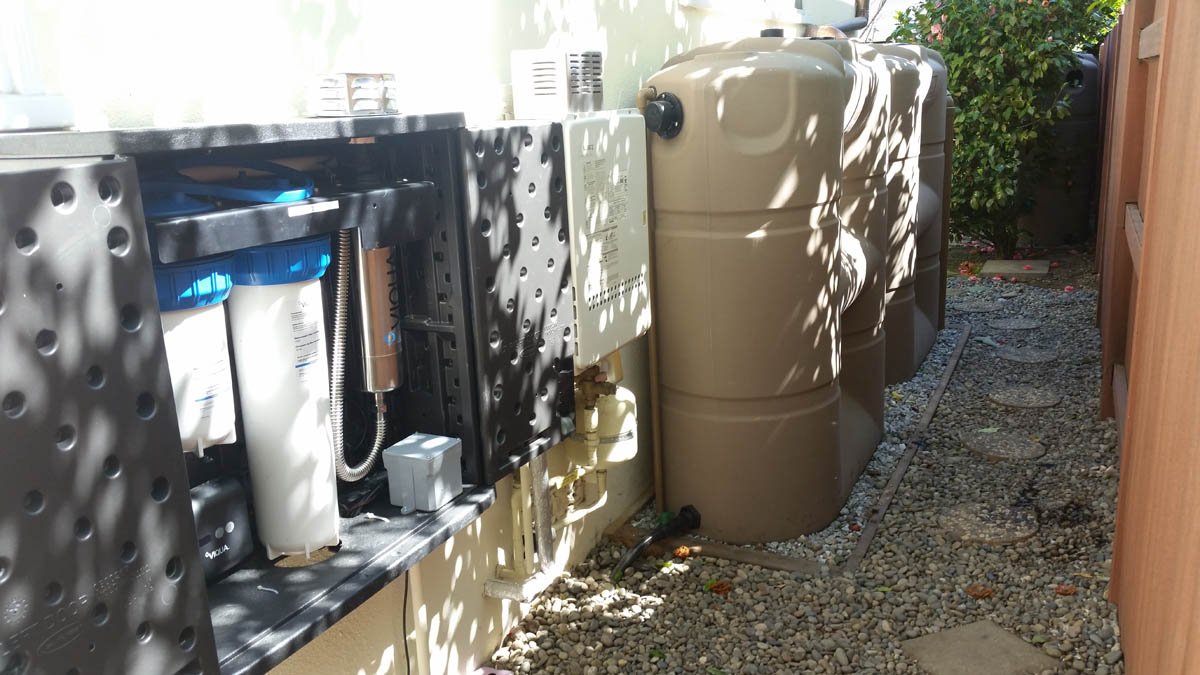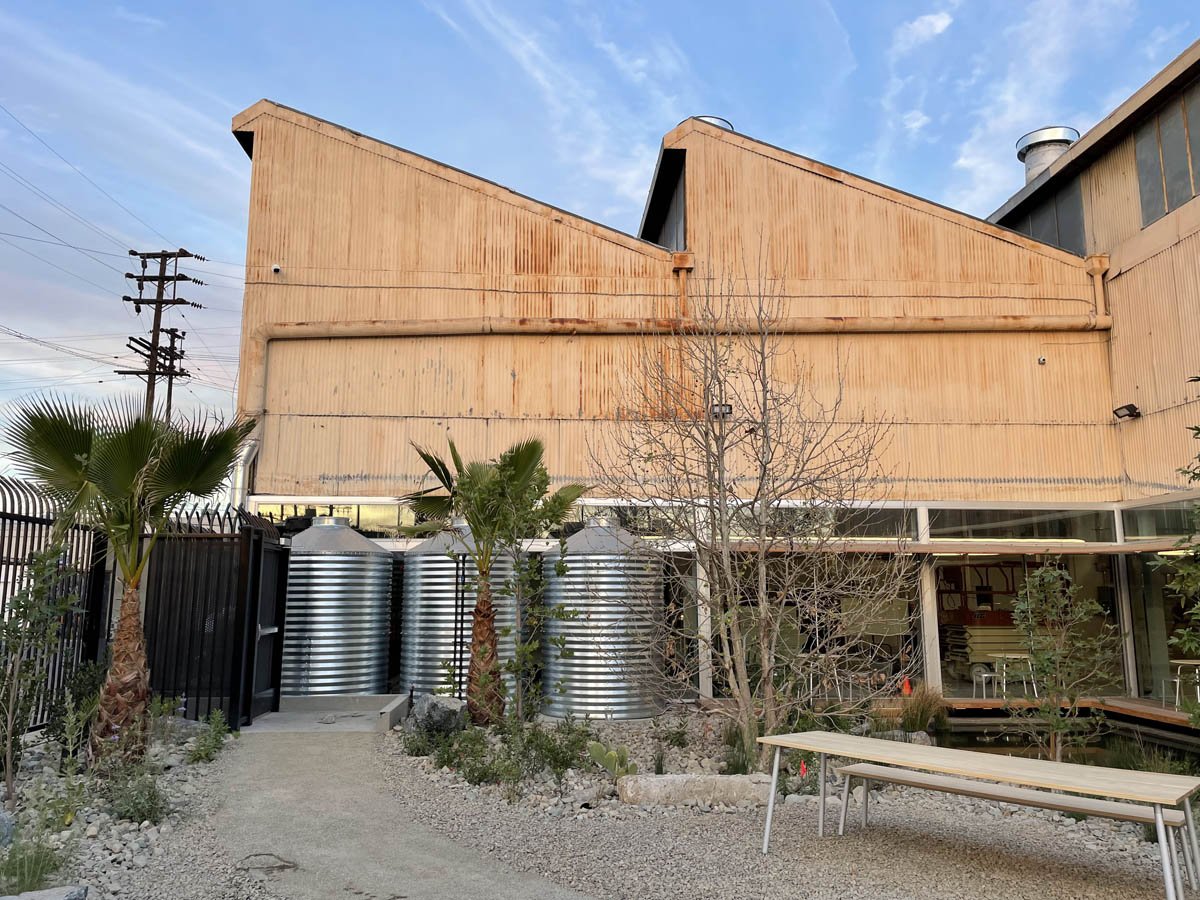Residential Rain Barrels
by Leigh Jerrard
How do rain barrels for residential purposes work?
Rain barrels are set up to collect rainwater runoff from roofs via downspouts that connect to the barrels. Smaller systems have a spigot for gravity-flow irrigation from a garden hose or watering can. Larger systems sometimes use rainwater pumps for easier distribution, or can even be filtered and connected to dripline irrigation systems. You can collect a lot of water if you have big enough tanks: one inch of rain falling on a 1000 square feet of roof will yield around 600 gallons.
Smaller systems have a spigot for gravity-flow irrigation from a garden hose or watering can. These feature levels to show how full the tanks are.
Who is an ideal candidate for rain barrels? What are the most important things to consider before purchasing a rain barrel?
Rain barrels are ideal for anyone with a roof and a garden who is interested in living sustainably. They save water, reduce stormwater runoff, and can be a source of emergency drinking water. Barrels should be sturdy, light-proof to reduce algae and screened for mosquitos. Size is important – in areas where rain is infrequent larger tanks are important, so you can catch as much water as possible when it does rain. In Los Angeles we install a lot of 500 to 5000 gallon systems.
Repurposed 275-gallon IBC totes, large polyethylene tanks in a square metal cage.
How can someone determine the best location to place a rain barrel? What factors does this depend on?
Start by looking at downspout locations – it’s easiest to divert water into barrels if they’re close to downspouts. Additionally, we look for level, unobstructed areas near gardens or plants that will appreciate the water. We also try to find unused spaces like side-yard setbacks, so you’re not occupying outdoor living areas.
Larger systems sometimes use pumps for easier distribution, and can be filtered and connected to dripline irrigation systems.
What materials are the best for rain barrels and why?
The cheapest and sturdiest material is polyethylene - these tanks will last a lifetime, but not everyone likes the aesthetic. Galvanized steel tanks are beautiful and range in size from a few hundred to thousands of gallons. Recycled oak wine barrels are charming but they don’t hold up well to the elements. We’ve done some systems using repurposed 275-gallon IBC totes, large polyethylene tanks in a square metal cage. These are super ecological since they’re recycled industrial shipping tanks – no added plastic waste.
Galvanized steel tanks are beautiful and range in size from a few hundred to thousands of gallons.
Do rain barrels attract mosquitoes?
Not if they’re installed properly! You want to make sure all points of access are screened with fine mesh – inlet and overflow. If this is done correctly you’ll have no problem with mosquitoes. Monitoring and maintenance is also key, to check or any pooling water or decomposing leaf mulch.
If rainwater is screened prior to entering the tank and kept in an opaque tank it can be stored for years.
How long can water sit in a rain barrel? What happens if it overflows?
If rainwater is screened prior to entering the tank and kept in an opaque tank it can be stored for years (exposure to sunlight will cause algae growth) - although you should use the water so the tank is empty for the next rainfall! Overflow is an important consideration – all tanks will fill up and overflow at some point, and it’s important to direct this water to a safe place, away from building foundations and hopefully somewhere it can percolate back into the land – unless flooding or erosion is a concern, in which case you should direct it to the street.





